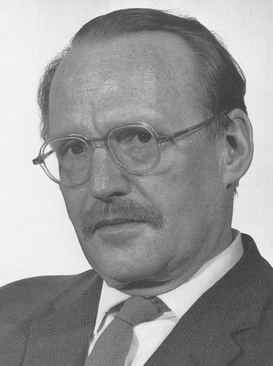John D. Eshelby facts for kids
Quick facts for kids
Professor
John D. Eshelby
|
|
|---|---|
 |
|
| Born |
John Douglas Eshelby
21 December 1916 Puddington, Cheshire
|
| Died | December 10, 1981 (aged 64) |
| Nationality | British |
| Other names | Jock |
| Alma mater | University of Bristol |
| Known for | Eshelby's inclusion |
| Scientific career | |
| Fields | Micromechanics of Materials |
| Institutions | University of Bristol Royal Air Force University of Illinois Urbana-Champaign University of Birmingham Cavendish Laboratory University of Sheffield |
| Thesis | Stationary and moving dislocation (1950) |
| Doctoral advisor | Nevill Mott |
John Douglas Eshelby (December 21, 1916 – December 10, 1981) was a brilliant British scientist. He was known for his important work in a field called micromechanics. This field studies how tiny parts of materials behave. His ideas helped scientists understand how materials bend, break, and change shape.
Contents
Early Life and Learning
John Eshelby was born in Puddington, Cheshire, England. His father was Captain Alan Douglas Eshelby. John went to St Cyprian's School in Eastbourne.
He was supposed to go to Charterhouse School. But he got sick with rheumatic fever. So, he studied at home with private teachers. He learned a lot by teaching himself.
John later got into the Physics Department at Bristol University. He earned top honors in physics in 1937. After that, he worked in a research lab. He studied magnetism and X-rays in solids.
War Service and Research
During World War II, John Eshelby worked for the British Navy. He helped make ships safe from magnetic mines. On May 4, 1940, he joined the Royal Air Force (RAF).
From 1941 to 1942, he tested radar systems for aircraft. These systems helped planes find ships. He also worked on radar technology at Malvern. He left the RAF in 1946 as a squadron leader.
University Career and Discoveries
After the war, John went back to Bristol University. He worked on his PhD degree. He taught himself about the theory of elasticity. This is how materials stretch and bend. His PhD was about "Stationary and moving dislocations." He finished his PhD in 1950. His advisor was Nevill Mott.
In 1951, John moved to the University of Illinois Urbana-Champaign in the USA. He worked there until 1953. Then, he became a teacher at the University of Birmingham in England. He taught there from 1953 to 1964.
During this time, he studied tiny flaws in materials. He created a new method called 'transformation strains'. He also studied what are now called Eshelby's inclusion problems. These ideas help explain how forces act on tiny defects in materials.
In 1964, he moved to the Cavendish Laboratory at Cambridge University. He was asked to come by Nevill Mott. From 1965 to 1966, he was a Fellow at Churchill College. Later, he became a professor at the University of Sheffield in 1971.
Personal Life
John Eshelby was a clear and fun teacher. He always prepared his lessons very carefully. He was not a big fan of doing experiments himself.
He knew many languages, including Sanskrit. He loved buying old, second-hand books. John Eshelby passed away on December 10, 1981.
Awards and Honors
John Eshelby was chosen as a Fellow of the Royal Society in 1974. This is a very high honor for scientists in the UK. In 1977, he received the Timoshenko Medal. This award is for great achievements in applied mechanics.
In 2012, two awards were created in his memory. These are the Eshelby Mechanics Award for Young Faculty and the Eshelby Memorial Bursary. These awards celebrate young teachers who use mechanics in creative ways.
Lasting Impact
John Eshelby's work changed the study of materials. His ideas helped scientists understand how materials break or change shape. The scientific idea called Eshelby's inclusion is named after him. It describes how a small part inside a material behaves when it changes shape.
Selected Writings
- A Tentative Theory of Metallic Whisker Growth University of Illinois Urbana-Champaign, 1953
- Collected Works of J. D. Eshelby, Mechanics of Defects and Inhomogeneities, Springer (2006), Xanthippi Markenscoff and Anurag Gupta (Eds.) ISBN: 1-4020-4416-X
- J. D. Eshelby, "The continuum theory of lattice defects," in: F. Seitz and D. Turnbull (eds.), Progress in Solid State Physics, Vol. 3, Academic Press, New York (1956), pp. 79–303.
See also
- Eshelby's inclusion

